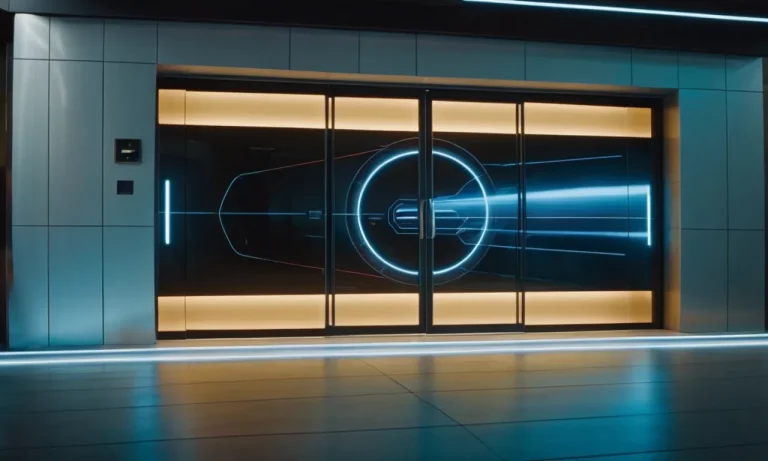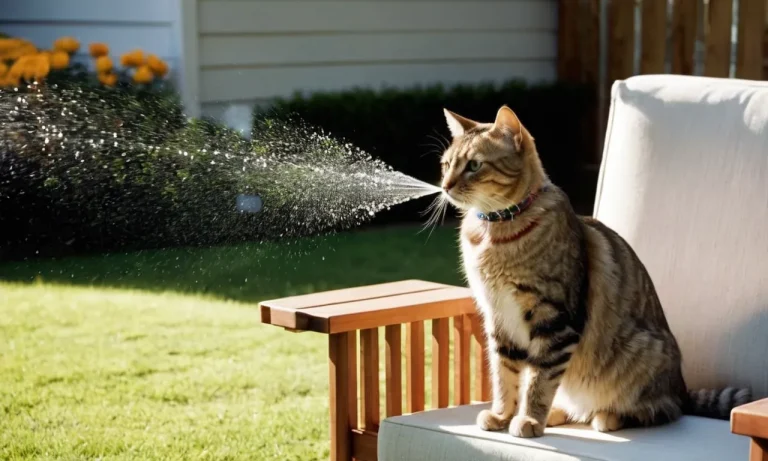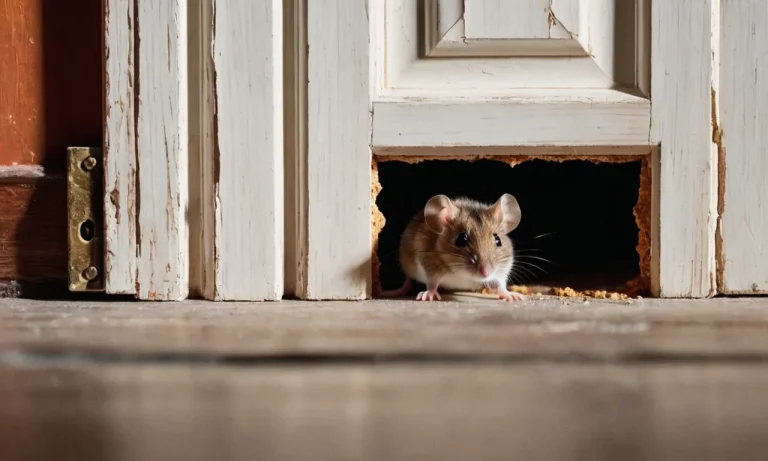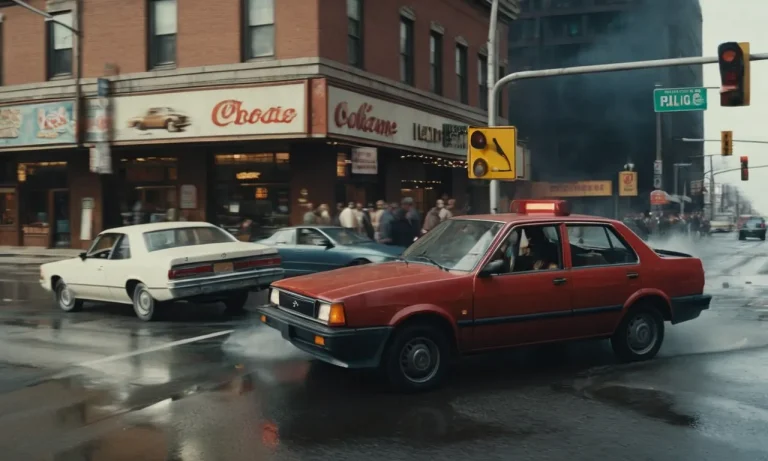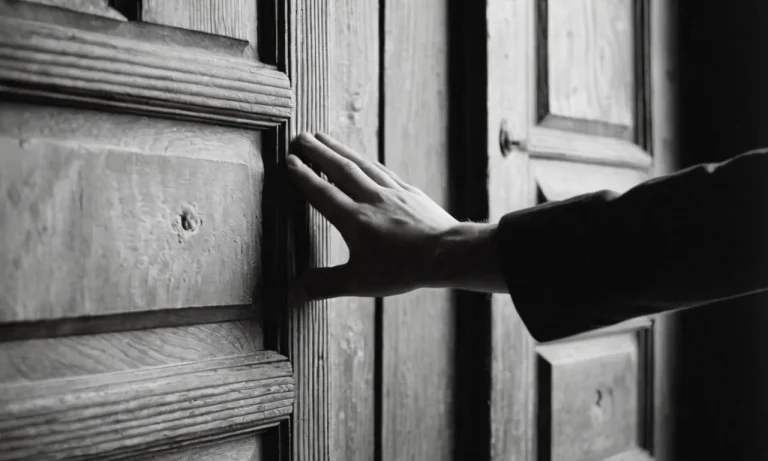Mastering The 3 Seconds In The Paint
In basketball, the paint – also known as the key or lane – is one of the most important areas on the court. As an offensive player, having the skill to operate in the paint effectively is crucial to team success.
If you’re short on time, here’s a quick answer to your question: The 3 second rule limits offensive players to 3 seconds in the paint before clearing out. Mastering footwork, post moves, shooting touch and passing from the paint takes repetition and court awareness.
In this comprehensive guide, we will break down everything you need to know about maximizing those precious 3 seconds in the paint on offense. You’ll learn the rule itself, why it matters, and key strategies to score, pass or get fouled once you’ve established position down low.
What Is The 3 Second Rule?
The 3 second rule is a fundamental rule in basketball that regulates the amount of time an offensive player can spend in the paint area, also known as the key, without actively participating in the play.
It is crucial for players to understand and master this rule in order to avoid turnovers and to maximize their team’s scoring opportunities.
The Origins and Reasoning Behind the 3 Second Rule
The 3 second rule was first introduced in the early 1930s to prevent players from camping out in the paint and restricting the movement of the game. The primary objective was to promote a more fluid and dynamic style of play.
By limiting the time an offensive player can spend in the key, the rule encourages constant motion and helps create a more open and fast-paced game.
The reasoning behind the rule is to prevent offensive players from gaining an unfair advantage by lingering in the paint. This ensures that the defensive team has an opportunity to guard the basket effectively and prevents the offense from continuously clogging the key, which could lead to an unbalanced and less exciting game.
NCAA vs. NBA Interpretations of the Rule
While the 3 second rule is a universal concept in basketball, there are some variations in how it is interpreted and enforced in different leagues. In the NCAA (National Collegiate Athletic Association), the rule dictates that an offensive player cannot remain in the paint for more than 3 consecutive seconds.
This includes any part of the player’s body being inside the key.
In contrast, the NBA (National Basketball Association) has a slightly different interpretation of the rule. In the NBA, a player is allowed to stay in the paint for up to 3 seconds as long as they are actively guarding an opponent or in the process of shooting the ball.
This interpretation allows for more flexibility and recognizes that there are situations where a player may need to occupy the paint for strategic purposes.
Penalties for Violating the 3 Second Rule
Violating the 3 second rule results in a turnover, with the opposing team being awarded possession of the ball. In addition to the turnover, the offending player’s team also incurs a personal foul. This means that if a player repeatedly violates the rule, they can accumulate personal fouls, which may lead to their disqualification from the game.
It is important for players to be aware of their positioning on the court and to have a good understanding of the 3 second rule to avoid committing these costly violations. Coaches often emphasize the importance of maintaining proper spacing and movement in the key to ensure compliance with the rule and to create scoring opportunities for the team.
Importance of the Paint in Basketball
The paint, also known as the key or the lane, is a crucial area on the basketball court that holds great significance in the game. It is the rectangular area under the hoop that extends from the baseline to the free-throw line.
The paint plays a vital role in various aspects of the game, making it essential for players to master what happens in those 3 seconds inside.
High Percentage Scoring Area
The paint is often referred to as the “high percentage scoring area” in basketball. This is because shots taken close to the basket have a higher chance of going in compared to long-range shots. Players who can effectively navigate through the paint and finish at the rim have a significant advantage in scoring.
According to statistics from NBA.com, the majority of points in the NBA are scored in the paint, making it a critical area for offensive success.
Offensive Rebounding Position
Another reason why the paint is important is its role in offensive rebounding. When a shot is taken, offensive players position themselves in and around the paint to grab any missed shots and get second-chance opportunities.
Being in the paint gives players a better chance to anticipate the trajectory of the ball and get into position for a rebound. The ability to secure offensive rebounds can greatly contribute to a team’s success in terms of extending possessions and creating additional scoring opportunities.
Close Proximity for Passing
The paint is also a strategic area for passing the ball. Due to its close proximity to the basket, players in the paint have a higher chance of making accurate and efficient passes to their teammates. This is particularly beneficial for players who excel in interior passing, as they can create scoring opportunities for their teammates by drawing defenders towards them and then making precise passes to open players on the perimeter or cutting to the basket.
Mastering Footwork and Post Moves
When it comes to dominating the paint in basketball, mastering footwork and post moves is essential. These skills allow players to outmaneuver their opponents and create scoring opportunities near the basket.
In this article, we will explore some of the most effective post moves and footwork techniques that can help players become unstoppable forces in the paint.
Drop Steps
One of the fundamental post moves is the drop step. This move involves catching the ball near the basket, taking a strong step with the outside foot towards the baseline, and then powering up for a layup or a dunk.
The drop step is a great way to quickly establish position and overpower defenders with size and strength. By using this move effectively, players can score easy buckets and draw fouls from their opponents.
Up and Under
The up and under move is a deceptive technique that can leave defenders guessing. It involves faking a shot or a move in one direction and then quickly changing direction to create space for a shot or a layup.
This move requires good footwork and timing, as well as the ability to sell the fake convincingly. By mastering the up and under, players can catch defenders off guard and create high-percentage scoring opportunities in the paint.
Spin Moves
Spin moves are a flashy but effective way to navigate through traffic in the paint. By spinning off a defender, players can create separation and clear paths to the basket. This move requires good balance, agility, and coordination.
By adding spin moves to their arsenal, players can keep defenders guessing and create scoring opportunities even in tight spaces.
Face Up/Turnaround Jumper
Developing a reliable face-up game and a turnaround jumper can make players nearly unstoppable in the post. A face-up game involves catching the ball facing the basket and using quick moves or jab steps to create space for a shot or a drive.
On the other hand, a turnaround jumper is a move where players pivot on one foot and shoot the ball over their shoulder. Both of these moves require good footwork, balance, and shooting touch. By mastering these techniques, players can keep defenders guessing and score from various positions in the paint.
The Mikan Drill
The Mikan Drill is a classic basketball drill that focuses on improving footwork and scoring near the basket. It involves players alternating layups with each hand while using proper footwork and timing.
This drill helps players develop their touch around the basket and improve their ability to finish with both hands. By incorporating the Mikan Drill into their practice routine, players can enhance their footwork and become more efficient scorers in the paint.
Developing Touch and Scoring
When it comes to mastering the 3 seconds in the paint, developing touch and scoring is crucial. This involves honing various techniques that can help a player become more efficient and effective in the low post.
By focusing on specific moves and shots, players can enhance their scoring ability and create more opportunities for themselves and their team.
Baby Hook
The baby hook shot is a fundamental move that every post player should learn. It involves a one-handed, sweeping motion towards the basket, typically with the player’s shooting hand. This shot is effective because it allows the player to shoot over taller defenders and can be executed quickly in tight spaces.
By practicing the baby hook from different angles and distances, players can develop a reliable scoring option in the paint.
Jump Hook
The jump hook is another valuable scoring move in the paint. It involves jumping off one foot and shooting the ball with a hook motion. This shot is particularly useful when facing strong defenders or when the player needs to shoot over a contested hand.
By practicing the jump hook with both the dominant and non-dominant hand, players can increase their scoring versatility and become a threat from anywhere in the paint.
Power Layups
Power layups are essential for finishing strong at the rim. This move involves using the body to shield the ball from defenders while still being able to generate enough power to finish the shot. By practicing different power layup variations, such as the Euro step or the spin move, players can improve their ability to score through contact and convert difficult shots in traffic.
Floaters
Floaters are valuable scoring options for players who are faced with taller defenders or challenging shot-blocking situations. This move involves shooting a high-arcing shot from the paint area, typically with one hand, to avoid getting blocked.
By practicing floaters with different release points and angles, players can develop a soft touch and become more adept at scoring over taller opponents.
Pump Fakes
Pump fakes are effective tools for creating scoring opportunities in the paint. By using a quick fake shot motion, players can get their defenders off balance and create an open driving lane or shooting space.
By practicing pump fakes and learning how to read defenders’ reactions, players can become more skilled at creating scoring opportunities for themselves and their teammates.
Remember, developing touch and scoring in the paint takes time and practice. By focusing on these techniques and incorporating them into training sessions, players can become more confident and effective in the low post.
So, whether it’s the baby hook, jump hook, power layups, floaters, or pump fakes, mastering these moves will undoubtedly elevate a player’s scoring abilities and contribute to their overall success on the court.
Passing Effectively From The Paint
When it comes to basketball, passing is a crucial skill that can make or break a team’s offense. This is especially true when it comes to passing from the paint, where defenders often collapse to protect the basket.
Mastering effective passing from the paint can open up scoring opportunities for your team and keep the defense on their toes. In this article, we will explore three types of passes that can be used to great effect from the paint.
High-Low Passes
One effective pass from the paint is the high-low pass. This pass involves a player in the post receiving the ball and then quickly passing it to a teammate either in a high or low position on the court.
The high-low pass can be a great way to exploit mismatches in size or speed between defenders, as it forces the defense to adjust and may create open scoring opportunities. According to Basketball Reference, teams that utilize high-low passes effectively have a higher field goal percentage and assist rate compared to those that do not.
Kickouts to Perimeter
Another effective pass from the paint is the kickout pass to the perimeter. This pass involves a player in the paint attracting the defense and then passing the ball out to an open teammate on the perimeter.
The kickout pass is a great way to create open three-point shot opportunities, as it forces the defense to scramble and close out on shooters. According to a study conducted by Sporting Charts, teams that make successful kickout passes from the paint have a higher three-point field goal percentage compared to those that do not.
Dump Offs on Drives
The dump off pass on drives is another effective pass from the paint. This pass occurs when a player is driving to the basket and draws multiple defenders, leaving a teammate open near the rim. The player driving to the basket then quickly passes the ball to the open teammate for an easy score.
Dump off passes on drives can catch the defense off guard and lead to high-percentage scoring opportunities. According to NBA.com, teams that make successful dump off passes on drives have a higher field goal percentage near the basket compared to those that do not.
Mastering effective passing from the paint is a skill that can greatly enhance a team’s offensive capabilities. By utilizing high-low passes, kickouts to the perimeter, and dump off passes on drives, teams can create scoring opportunities and keep the defense guessing.
So, next time you find yourself in the paint, remember the importance of passing effectively and watch your team’s offense thrive.
Conclusion
The 3 second rule fundamentally shapes offensive basketball. By limiting the time offensive players can occupy the high value real estate near the hoop, it opens up driving lanes for guards and cuts down on ‘camping out’ in the paint.
Mastering footwork, scoring moves, shooting touch and court vision in the paint takes time and repetition. But players who excel at operating in the paint give their teams an efficient source of points.
While the rule may limit you to 3 seconds at a time, making the most of them can have a huge impact on the game.


